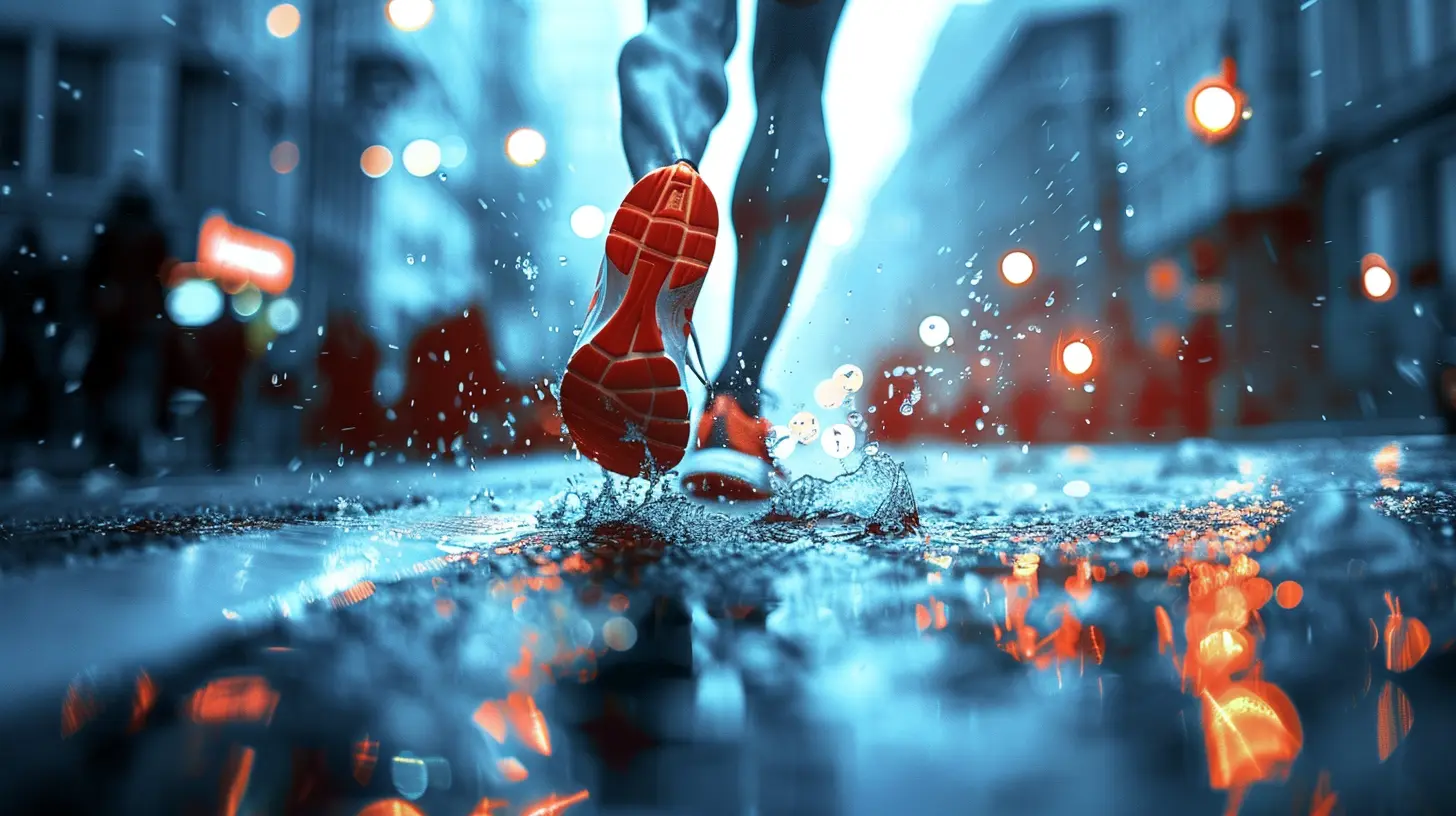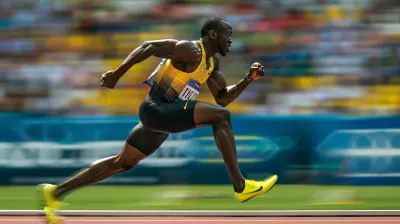The Power of Visualization in Marathon Running
13 October 2025
Let’s be honest—running a marathon is no walk in the park. It’s 26.2 miles of sheer grit, sore calves, mental gymnastics, and the occasional silent prayer to your feet not to give up halfway through. But here's a little secret that top runners use, and nope, it doesn’t involve gooey energy gels or fancy compression socks.
It’s called visualization—a mental superpower that can turn your marathon dreams from those half-hearted jogs to the fridge into finish-line glory.
So, if you're the kind of person who starts wheezing just thinking about running a mile, or if you’re a seasoned marathoner looking for that extra edge, stick around. This deep dive into the power of visualization in marathon running might just change the way you lace up your sneakers.
What the Heck Is Visualization Anyway?
Let’s break it down. Visualization is the art (and yeah, it’s kind of an art) of mentally rehearsing something before actually doing it. Think of it like a dress rehearsal—only it happens in your brain.Athletes have been using it forever. Olympic gold medalists, pro soccer players, and yes, even everyday runners like you and me. They close their eyes, imagine every stretch of the course, every crowd cheer, every footfall. And guess what? The brain doesn’t really know the difference between imagining an action and physically doing it.
In fact, studies have shown that mental imagery can activate the same brain regions as the real action. Hello, science-backed awesomeness!
The Mind-Body Connection: More Powerful Than You Think
So why is this important for marathon runners?Picture this: You’re 18 miles in, legs feel like wet noodles, and there’s a hill ahead that looks like Mount Everest in sneakers. If you’ve been mentally rehearsing that moment—and visualizing yourself powering up that hill with Beyoncé-level confidence—your brain says, “Oh yeah, we’ve been here. We got this.”
Visualization builds mental endurance, and trust me, you’re going to need it when your actual endurance starts playing hide-and-seek at mile 22.
How Visualization Affects Performance (Spoiler Alert: It’s Kinda Magical)
Let’s get nerdy for a second. When you visualize running a marathon:- Your brain strengthens neural pathways involved in motor control.
- You improve focus and reduce pre-race anxiety.
- Confidence gets a major boost.
- The body responds as if you’ve already trained harder.
This isn’t pseudo-science. We’re talking about a proven technique used in sports psychology for decades. Athletes from Michael Phelps to Eliud Kipchoge swear by it. It’s like Jedi mind tricks for runners.
Step-By-Step: How to Visualize Like a Marathon Jedi
Alright, enough theory. Let’s put this into practice. Here’s how you can start visualizing your marathon success—no third eye required.1. Pick Your Scene
Find a quiet spot where you can chill for a few minutes. Sit comfortably (not curled up in discomfort like post-long-run you), close your eyes, and start imagining.You can run the whole marathon in your mind or just key moments—like the start, famous landmarks, or that horrendously painful final mile.
2. Engage All the Senses
Here’s where things get vivid:- Hear the sound of the crowd and your rhythmic breathing.
- Feel the pavement under your shoes.
- Smell the fresh morning air (or the questionable aroma of 10,000 sweaty runners).
- See your race kit, your bib number, those mile markers ticking by.
The more detailed, the better. Your brain loves a good high-def mental movie.
3. Imagine Obstacles—and Conquering Them
Don’t sugarcoat it. Marathons are tough. Picture the wall you’ll hit at mile 20. Imagine the cramp in your calf that threatens to derail everything. Now see yourself overcoming it. Visualize finishing strong, maybe even sprinting (okay, fast-shuffling) through the finish line.4. Practice Daily
Like any skill, visualization takes... you guessed it, practice. Do it daily in the weeks leading up to race day. Even five minutes a day can make a difference.Real Runners, Real Results
Still think this is some woo-woo yoga nonsense? Let’s look at some examples.Olympic runners often envision their entire race, right down to the sweat dripping into their eyes. Multiple studies from universities like Stanford and Harvard show that athletes who use visualization techniques perform significantly better under pressure.
One study saw marathon runners who visualized successfully crossing the finish line finishing faster, with lower post-race fatigue. That’s not just mental magic—that’s real physiological impact.
Why It Works: A Peek Inside Your Brain
Visualization strengthens the connection between your prefrontal cortex (home of planning and decision making) and your motor cortex (movement central). When you mentally rehearse your marathon, you’re basically upgrading your mental Wi-Fi signal between brain and body.It’s like giving your body a cheat sheet before the exam.
And also—bonus points—visualizing success reduces the cortisol your body dumps during stress. Less cortisol = lower anxiety = smoother race day performance.
Speaking of Race Day… Here’s Your Mental Prep Checklist
Visualization isn’t just for training. On race day morning, while everyone around you is hyper-caffeinated and bouncing like kangaroos, take five minutes for yourself.Here’s what to run through your mind:
- The perfect start—calm, collected, confident.
- Settling into a steady pace by Mile 3.
- Running through tough spots like a total boss.
- The final stretch—crowds cheering, adrenaline pumping.
- Crossing the finish line with arms raised and face full of triumph (and sweat).
You’re not predicting the future—you’re creating a mental roadmap to follow.
But What If It Feels Silly?
Yeah, it might.Sitting in your living room, eyes closed, imagining yourself running past the 21st mile isn’t exactly glamorous. You might feel a bit foolish at first.
But trust me, the first time you hit a rough patch during the race and your brain says, “Hey, we’ve seen this before and we’re fine,” you’ll realize just how powerful this tool is.
Remember, visualization isn’t about pretending. It’s training. Just like hill sprints. Only without the burning quads.
Bonus Hacks: Make Visualization Even More Effective
Let’s level up your mental training game:🎵 Add a Soundtrack
Music helps intensify emotion. Play your race day playlist during visualization to deepen the connection.📝 Keep a Visualization Journal
Write down what you see, feel, and think during your mental runs. It helps solidify the experience.⏰ Morning or Night Works Best
Mental imagery is super effective when you're relaxed. Try it right after waking up or before sleep.Visualization Isn’t Just for Elites
Not trying to break world records? Visualization is still for you.It doesn’t matter if you're aiming for 2:30 or 6:00. Whether you're running to qualify for Boston or just to prove your own self-doubt wrong—mental rehearsal can help anyone.
It bridges the gap between where you are and where you want to be. It reminds your brain (and your body) that yeah, you actually can do hard things.
A Thought to Run With
Marathon running is part physical, part mental, and part emotional. Visualization might not magically shave 10 minutes off your time, but it can transform your experience.Why? Because when your mind believes in the possibility of victory, your body follows.
So the next time your training plan calls for a rest day, consider spending a few minutes running a race in your head. Who knows—mental miles might just be your strongest ones yet.
Final Lap
Let’s wrap this up like a warm foil blanket at the finish line.Visualization is like mental training wheels for your marathon journey. It’s free. It’s easy. And it works. So if you’re serious about showing up strong—physically and mentally—it’s time to make this your secret weapon.
Now go ahead, close your eyes, and picture that finish line. You’re already halfway there.
all images in this post were generated using AI tools
Category:
MarathonAuthor:

Uziel Franco
Discussion
rate this article
1 comments
Zayla Potter
Visualization can significantly enhance performance; mental preparation is as crucial as physical training.
October 21, 2025 at 3:48 AM

Uziel Franco
Thank you! I completely agree—visualization is a key tool that complements physical training, helping runners mentally prepare for race day.


